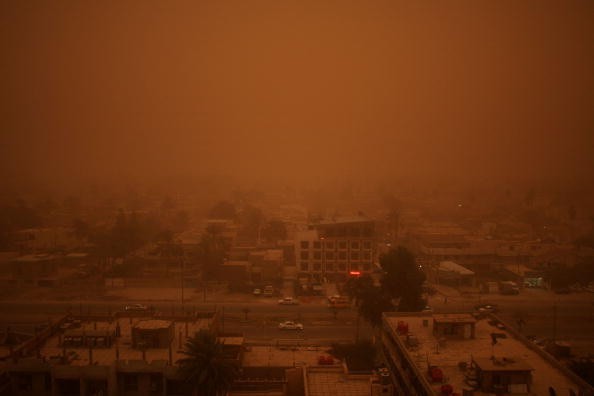For two weeks in June 2020, a great dust plume dubbed as 'Godzilla' from Saharan Africa creeps westward across the Atlantic, overlaying the Caribbean and Gulf Coast states in the U.S.

Godzilla
The dust storm was very powerful, it got the nickname "Godzilla." Now, scientists from the University of Kansas have released a new study in the Bulletin of the American Meteorological Society analyzing the mechanism that conveyed the dust. Their outcomes gave an explanation of a phenomenon that could happen more frequently in the years to come because of climate change, affecting the health of humans and transportation systems.
According to the study, African dust made the skies of the Caribbean and American Gulf States dark all thanks to a trio of atmospheric patterns. Lead author Bing Pu, who is also an assistant professor of geography & atmospheric sciences at KU said: "Our study discovers that it was mostly three different systems, the African easterly jet transport the dust from Africa towards the Atlantic region.
Later to the North Atlantic Subtropical High, which is a high-pressure system settled over the subtropical North Atlantic, can further convey it towards the Caribbean region. Once the dust gets to the Caribbean region, another system - Caribbean low-level jet - together with the subtropical high can further convey the dust from Caribbean region towards the States.
Satellite Datasets
Pu together with Co-author Qinjian Jin, lecturer and academic program associate with KU's Department of Geography & Atmospheric Science, made use of satellite datasets to rebuild the patterns that conveyed the dust from Africa to the Americas.
Pu said they mainly made use of Moderate Resolution Imaging Spectroradiometer on Terra and Aqua satellites, the Cloud-Aerosol Lidar with Orthogonal Polarization onboard the Cloud-Aerosol Lidar and Infrared Pathfinder Satellite Observation satellite, and the Visible Infrared Imaging Radiometer Suite onboard the Suomi National Polar-orbiting Partnership satellite.
Joining the satellite data with readings gotten from air quality stations, the scientists made use of computers to analyze how the dust was moved between jet-stream systems to get to the Caribbean and U.S., where it disturbed transportation and had the possibility to change weather. "News reports commented that the visibility of the airport in San Juan, Puerto Rico, was lowered down to five miles, which is very low," Pu said.

Bad Effect of the Dust
"Visibility in the U.S. Virgin Islands was low to three miles, so it can affect public transportation. There are also environmental impacts. Dust can affect precipitation and circulation - they can alter the climate as well, when there's a great amount. "Sadly, the dust plume from Africa had the possibility of causing health problems for people in the Americas.
Pu also said small particles, mainly those with diameter below 2.5 micrometers, can be taken into the human breathing system easily, leading to respiratory diseases."
Hotter, drier weather and decreased vegetation in Africa could manufacture more airborne dust. Yet, these emissions are very difficult to forecast, Pu said.
Related Article : People With Breathing Issues at Risk as Dangerous Dust Storm Blankets South Australia
For more news, updates about dust storms and similar topics don't forget to follow Nature World News!
© 2025 NatureWorldNews.com All rights reserved. Do not reproduce without permission.





